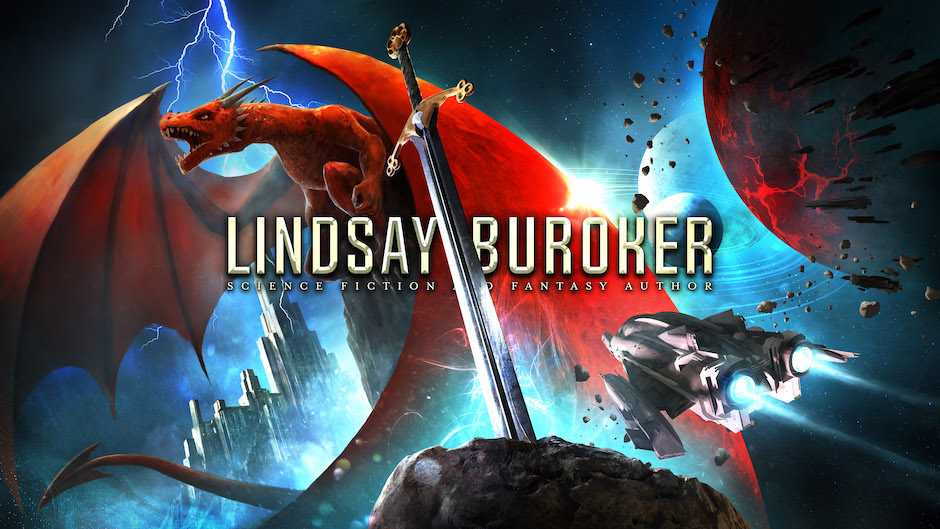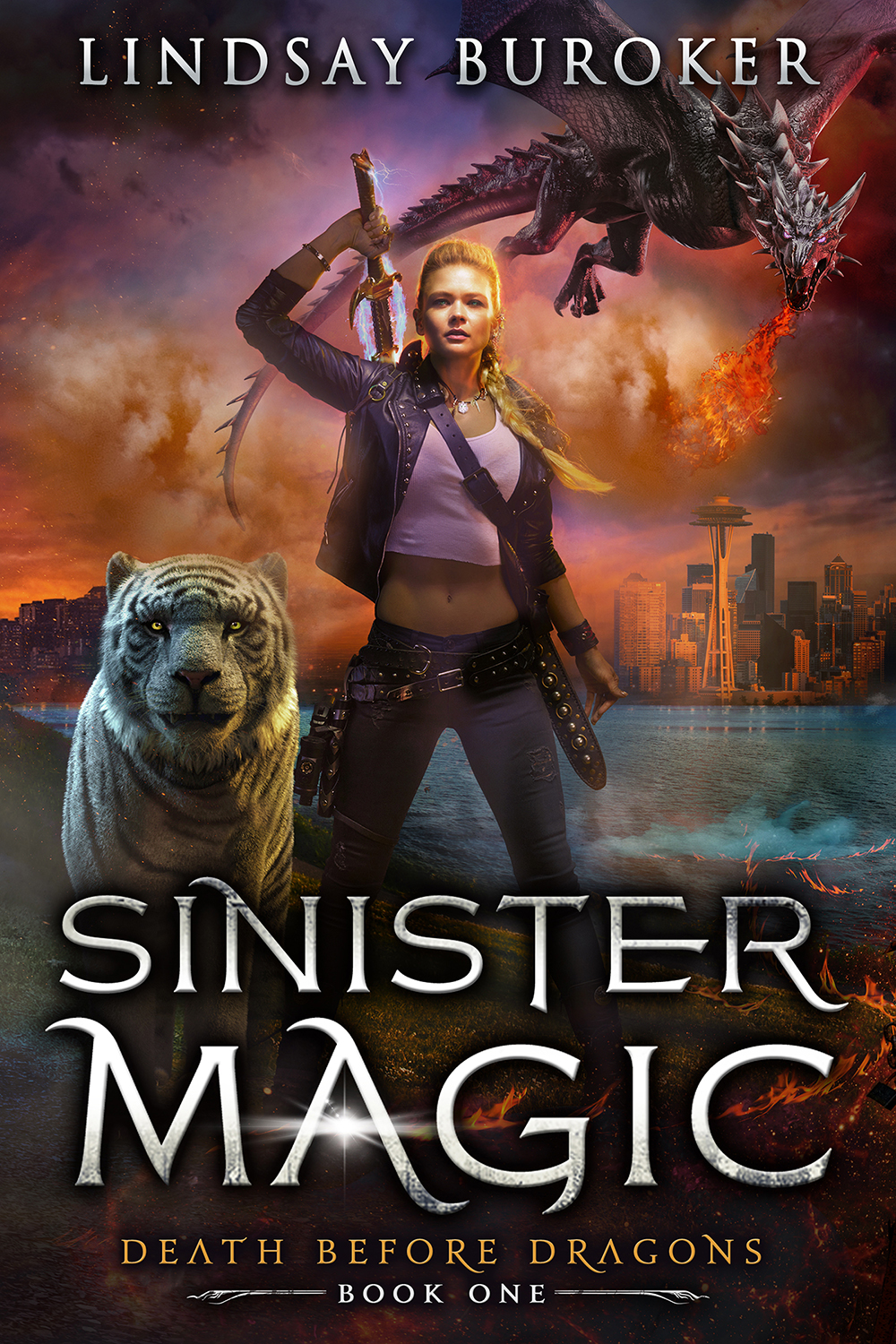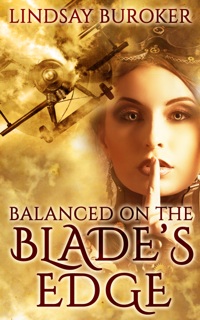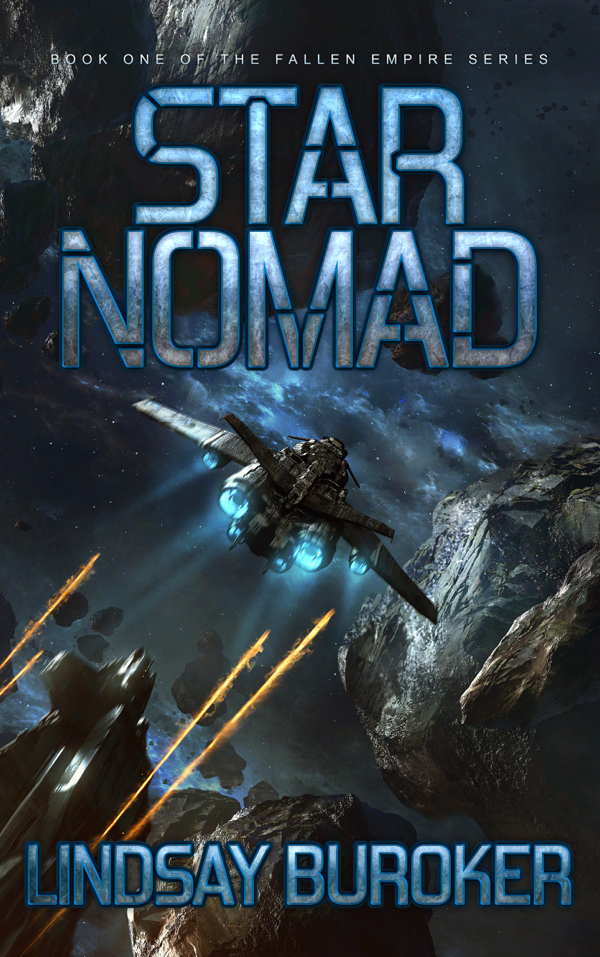If you’re hand-selling your books by directing people to Amazon, one at a time (or perhaps in an occasional clump through buying a sponsorship on a blog/forum/mailing list), you might feel that you’re constantly pushing a boulder up a hill, and you never seem to get to the point where your book sells itself. If you stop hustling for a day, your sales tank. On the other hand, you probably know of authors who can release a new title and have it instantly jump to the top of the sales rankings. Maybe you’re even getting Amazon emails that recommend you buy that author’s book. (The nerve, right?)
So, what’s the secret to getting to that point? To having Amazon effectively promote your book for you?
There are two main ways (with overlap between the two):
First, be super popular already, or at least have a mailing list with a few hundred true fans who will buy your new releases the first week they’re out. This means you can sell enough books right away to appear on the first page of some Top 100 categories and in the also-boughts for a lot of other books. This gives you the visibility in the store that allows new readers to find and buy your book, whether you’re out there continuing to promote or not.
If you’re at the top of a popular category, you might end up selling hundreds or even thousands of copies a day and get mentioned in Amazon’s newsletters. (I’ve never been at the top of those categories, so I couldn’t tell you for sure how magnificent that is, but it’s certainly possible to do well and receive steady sales with some visibility in less popular categories.)
If your book isn’t appearing in any of the Top 100 lists, it’s losing out majorly when it comes to visibility in the store. Oh, it might show up in a search here and there (not many people do keyword searches for fiction) or in another book’s also-boughts, but nobody browsing through “cozy mystery” category is going to find your book if it’s the 673th best seller in the genre.
Second, pursue the big-fish-small-pond strategy and find some less competitive categories that you might be able to dominate. Oh, you’ll still have to hustle to sell books initially, but you should find it easier to stick at the top of a less competitive category, and you should continue to have some visibility after that initial burst of promo activity.
I want to talk about the second strategy today, since it’s something I have recent experience with.
Finding smaller niche categories to appear in
As we’ve discussed, it’s good to appear in at least a couple of Top 100 lists. Those popular categories we mentioned are great, because a lot of people are checking them out everyday, but they’re also tough to compete in. As I write this, it takes a 1,000 sales ranking to break into the Top 20 of the epic fantasy category and a 4,600 ranking to reach the 100th spot. On the flip side, you can get into the Top 20 of a similar fantasy category, Sword & Sorcery, with a 3,000 ranking (9,300 gets you in the Top 100). Sword & Sorcery isn’t available as a selection on the KDP dashboard right now — you get into it by putting the right keyword into the keyword field. More on that here: How to Get Your Book into More Categories on Amazon with Keywords.
Getting a sub-10,000 sales ranking is still pretty challenging, especially for a debut author, but it’s a little more doable, especially if you string together some advertising opportunities (if you’ve got some solid reviews already, look into Bookbub, Pixel of Ink, and Ereader News Today) or a whole lot of hustling on the social media sites (check out my interview with Sue London for how she worked that angle to make a bestseller last year). There are categories out there that are less competitive than Sword & Sorcery too.
A couple of months ago, I released Balanced on the Blade’s Edge, a fantasy novel I wrote, edited, and published in less than a month as kind of an experiment. I didn’t have high sales expectations for it, because it was unrelated to any of my other work. Since it had a steam-age setting with a fighter pilot hero (think WWI-style planes in a fantasy setting), I put it in the relatively new steampunk category. You don’t need to use the keywords to get into it, but because it’s a sub-category of science fiction instead of fantasy, I’m guessing some fantasy publishers don’t think to look for it there. Read: it’s not that competitive, at least at the moment.
In the last couple of months, Blade’s Edge has sold better than anything else I have out now, even the more recently released Republic, which is the eighth book in my my most popular and established series. Granted, Blade’s Edge is a $2.99 ebook as opposed to a $6 one, so Republic has made me more money, but I’ve only had one other new release have the sticking power that this one has had in its opening months.
So, why the success? It got a lot of reviews early on (more on how I accomplished that in this podcast: Getting Book Reviews and Building a Relationship with Readers), but it’s also been #1, #2, #3, or #4 in the steampunk category for the last two months. For the first six weeks or so, it had a sales ranking between 1,000 and 2,000. It’s since dropped down to around 4,000, and as time passes, I’m sure it will drop more, but most of my books drop much more quickly (most have appeared in the more competitive epic fantasy category and, after the initial sales to established readers, they’ve dropped out of the charts). But even with a 4,000 ranking, as I write this Blade’s Edge is hanging out at #3 in steampunk (remember, that ranking wouldn’t even get me into the Top 100 in epic fantasy).
It’s a foregone conclusion that there are fewer readers browsing that steampunk category than there are the epic fantasy one, but there are more people searching there than I had expected. Blade’s Edge has had a nice run by being the big fish in the small pond.
So, how do you find a less competitive category for your book?
First off, check out that blog post I already mentioned if you haven’t already: How to Get Your Book into More Categories on Amazon with Keywords (it links to the KDP help page that shows you how to get into the categories not listed on the KDP dashboard).
Second, spend some time clicking on the Top 100 books in the category you usually list in. You might find that they have some unexpected second and third categories. I stumbled across the Literature & Fiction > Action & Adventure > Fantasy category that way a few months ago. I had no idea there was a fantasy category under Lit & Fiction, and as I write this, it happens to be easier to rank in than the epic fantasy category. There are also science fiction and fantasy subcategories under Romance. (That’s the other spot Blade’s Edge appears.)
Lastly, make sure your book is actually a good fit for the category you’re sticking it in. It won’t do you much good if the book and blurb don’t match up with reader expectations.
Update: I had to go hunting for this, and it’s a couple of months old so the sales ranking numbers will have changed a bit, but if you’re searching for less competitive categories, it’s worth a look: Top Amazon Fiction Categories to Chart in on 7 Sales a Day or Less.




Thank you so much for these posts Lindsay.
This can definitely work, which I know for a fact because I am doing it right now. 🙂
When I started plotting out my FROSTBORN series in 2012, I wanted to do a big fantasy series with elves and orcs and wizards and knights because no editors bought such things in the bad old days of tradpub. So as I looked at the fantasy categories, I noticed that the Arthurian list tended to be rather lower churn. So as I built the FROSTBORN world, I decided that the humans would in fact be humans from Earth that survived the collapse of Arthur Pendragon’s realm and escaped through a magical portal to the world with orcs and elves and magic. That would give me the justification to put it in Arthurian, since all the humans were descended from refugees of Arthur’s kingdom. (And then I could claim to be part of a literary tradition going back to Mallory and Geoffrey of Monmouth and all that.)
It worked pretty well in the US. The fourth book in the series came out on May 1st, and the fourth book and the first book bounced around the top 20 in Arthurian in the US for all of May.
But it worked really, really well in the UK. All four FROSTBORN books have sat in the top four spots of the UK Arthurian list for almost all of May. Additionally, the fourth book actually sold more in the UK than in the US during its first month, which was the first time I’ve ever had that happen.
Though after four books, the number one reader question is when the main character will acquire a love interest.
-JM
Smart strategy, Jonathan. Glad it worked for your stories and that it’s helping you to sell!
Thanks for mentioning the Self Publishing Roundtable Blog. It’s good to know people are getting some use out of the information.
I love this post. I’ve made virtually all my royalties off of attacking niche genres.
Slightly off topic; your free books in the Kobo store say they are not available in the UK (ie: EE1 and Flash Gold).
As these both appear to still be available for free on Kindle and Smashwords I wondered if this is an administration error.
However it is looking like Rakuten the new’ish owners of Kobo are trying to stop/limit access to all free books via their store. The result being that your individual books are no longer visible to potential new customers there.
When I purchased my Kobo touch two+ years ago, the company used access to millions of free books as a main selling point. Now they seem to want cash for everything no matter how old it may be.
Thanks for the head’s up, Laurence. Unfortunately, I don’t know if there’s anything I can do to change that right now. 🙁 They appear in the regular Kobo store that I see from the US as free and should be that way across the board. Maybe it’ll straighten itself out on its own (I hope).
Pingback: Blogs for Self-Publishers, May 31 to June 6, 2014 — The Book Designer
My debut book is Steampunk as well as fantasy. It’s a coming of age story as well, but I’m still rather hesitant to put it in the “juvenile” section on Amazon. I had it in teen and young adult Steampunk for a short time. Then I actually had a top 20 ranking at one point. Should I put it back in that category of teen and young adult even though it’s, in my opinion, a bit more mature than “juvenile?” That’s the dilemma I’ve been wrestling with for the past week. I’m going to look at some of those other links you have as well. Thanks for these posts, they are invaluable!
You could put it in both, or there’s actually a “coming of age” category in fantasy that you can get into with keywords too. Usually the cut-off for YA is if the hero is older than 18, not that there are necessarily hard and fast rules. You can always switch categories, too, if one seems to be getting more eyeballs than another.
The hero starts off the series at twelve years old, but he deals with mostly adults. I think you are right; I’m going to experiment. Thanks!
Thanks so much for the info you share. I’m learning so much from you– (I know–word repetition), but it’s sincere. Thank you.
Pingback: Episode 10 – Removing Barriers to Entry | Sell More Books Show
Extremely good article with helpful links.
Loved the extra category article link as well.
Thanks for sharing
C T Mitchell